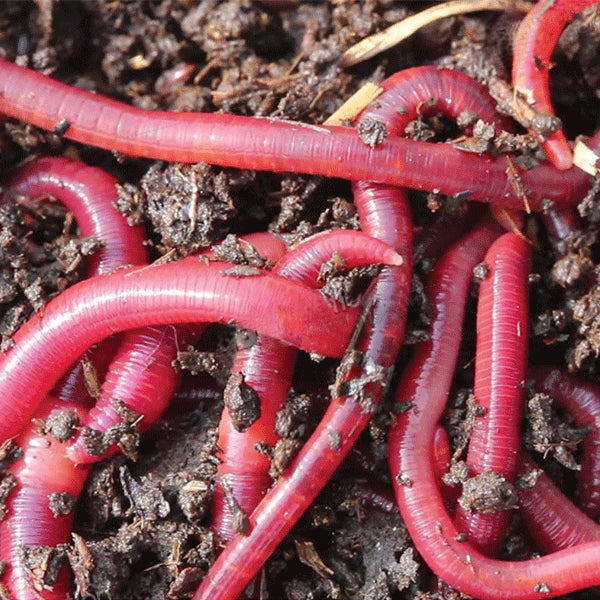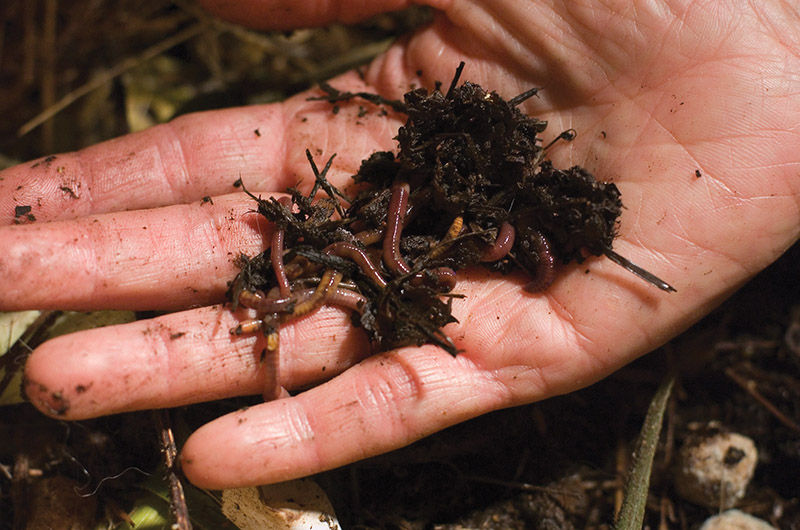Eco-friendly red wigglers: To improve compost
Eco-friendly red wigglers: To improve compost
Blog Article
The Duty of Red Wigglers in Sustainable Horticulture
The assimilation of red wigglers right into sustainable gardening practices offers a compelling technique to improving dirt wellness and lowering organic waste. These microorganisms not only transform kitchen scraps into nutrient-dense compost with vermicomposting yet additionally aerate the dirt, promoting optimum problems for plant growth. As they damage down complex natural materials, they actively foster a growing microbial ecological community essential for lasting agriculture. The implications of using red wigglers extend past mere composting; their duty in shaping a more sustainable future warrants a deeper exploration of their benefits and useful applications.
Recognizing Red Wigglers
Red wigglers, scientifically called Eisenia fetida, are a types of earthworm renowned for their function in sustainable gardening and composting practices - red wigglers. These worms prosper in breaking down organic matter, making them specifically efficient in converting cooking area scraps and backyard waste right into nutrient-rich compost. Unlike conventional earthworms, red wigglers have a higher tolerance for varying dampness levels and can flourish in atmospheres with bountiful organic material
(redworms for composting)Typically, red wigglers are smaller sized than their earthworm equivalents, normally determining in between 3 to 4 inches in length. They have a reddish-brown pigmentation and have a segmented body structure that assists in their burrowing and feeding tasks. These organisms are hermaphroditic, implying each private possesses both male and women reproductive body organs, which permits efficient population growth under ideal conditions.
The habitat choices of red wigglers include moist, dark environments abundant in organic material, such as garden compost bins or worm farms. Their environmental duty prolongs beyond composting; they are indispensable in aerating the soil and assisting in nutrient biking, which inevitably contributes to healthier yard environments. red wigglers. Recognizing the biology and behavior of red wigglers is necessary for those looking for to apply efficient vermicomposting in sustainable horticulture
Advantages of Vermicomposting
Vermicomposting deals countless advantages that enhance lasting horticulture techniques and add to environmental wellness. Among the primary benefits is the makeover of natural waste right into nutrient-rich compost, which improves dirt framework and fertility. The spreadings created by red wigglers are packed with beneficial microbes and necessary nutrients, making them an exceptional all-natural fertilizer.
Additionally, vermicomposting significantly minimizes landfill waste. By diverting kitchen scraps and lawn waste from land fills, this practice not only lessens methane emissions-- a potent greenhouse gas-- but also promotes a circular economic climate, where waste is repurposed as a source.
An additional advantage is the improvement of dirt oygenation and drain (red wigglers). The burrowing activity of red wigglers creates channels in the dirt, enabling air and water to penetrate even more easily, therefore fostering a healthier origin system for plants
In addition, vermicomposting can be done on a little range, making it accessible for urban gardeners and those with limited area. This method urges ecological stewardship and recognition, as people end up being much more involved with their waste administration practices. Inevitably, vermicomposting represents a sustainable, effective, and green technique to gardening that benefits both plants and the earth.
Exactly How to Start Vermicomposting
Beginning your own redirected here vermicomposting system can be a satisfying venture that improves your lasting horticulture practices. To begin, choose an ideal container, such as a plastic container or wooden box, with excellent water drainage and ventilation. The dimension will certainly depend on the volume of cooking area scraps you create; a container of 10-14 gallons typically is adequate for a household.
Following, prepare the bed linens material. Shredded newspaper, cardboard, and coconut coir are outstanding choices, offering a comfortable habitat for the red wigglers. Objective for a bed linen deepness of about 4-6 inches, which ought to be damp yet not soaked.
When the bedding is developed, introduce your worms. Red wigglers (Eisenia fetida) are one of the most suitable for composting. Begin with about one extra pound of worms for every single 2-3 pounds of kitchen area scraps weekly.
Begin including kitchen waste, staying clear of meat, dairy, and oily foods, as these can bring in bugs and produce smells. On a regular basis monitor the container's moisture levels and temperature, guaranteeing it remains within the excellent variety for worm task. With these first actions, you'll be well on your means to producing nutrient-rich compost for your yard.
Maintaining a Healthy And Balanced Worm Bin
A growing worm container needs constant care and attention to preserve an optimal environment for the red wigglers. Trick variables to keep track of include dampness degrees, temperature, and food supply. Keeping a dampness level comparable to a wrung-out sponge is important; way too much water can result in anaerobic problems, while too little can dry out the worms.
Temperature level is likewise important, as red wigglers thrive in a range of 55 to 77 degrees Fahrenheit. Extreme temperature levels can worry the worms, potentially leading to death. For that reason, placing the container in a climate-controlled location or utilizing insulating materials can assist regulate temperature level changes.

Finally, aeration is important. Regularly turning the bed linen and utilizing a fork or shovel can stop compaction and promote air flow, making certain a healthy and balanced, growing environment for the red wigglers. By sticking to these methods, garden enthusiasts can maintain an effective worm bin that sustains lasting gardening initiatives.
Effect On Soil Health And Wellness
Enhancing dirt health and wellness with the use of red wigglers is a basic element of lasting horticulture. These worms, known scientifically as Eisenia fetida, play an essential role in improving soil framework and fertility. By consuming raw material, red wigglers break down intricate products into less complex substances, a procedure called vermicomposting. Completion product, worm spreadings, is abundant in important nutrients, consisting of nitrogen, phosphorus, and potassium, which are essential for plant development.

(Lake Hickory Worms,)Studies have actually revealed that dirts enhanced with worm castings display increased microbial activity and improved fertility, bring about higher crop returns. By incorporating red wigglers into horticulture practices, gardeners not only enrich their soil however also add to an extra lasting agricultural system, emphasizing the interconnectedness of soil wellness and ecological stewardship.

Verdict
In conclusion, red wigglers substantially add to sustainable horticulture via their efficient vermicomposting techniques. By advertising waste decrease and fostering a circular economic climate, red wigglers emerge as crucial elements in environmentally friendly gardening campaigns, highlighting their vital function in environmental sustainability.
Report this page